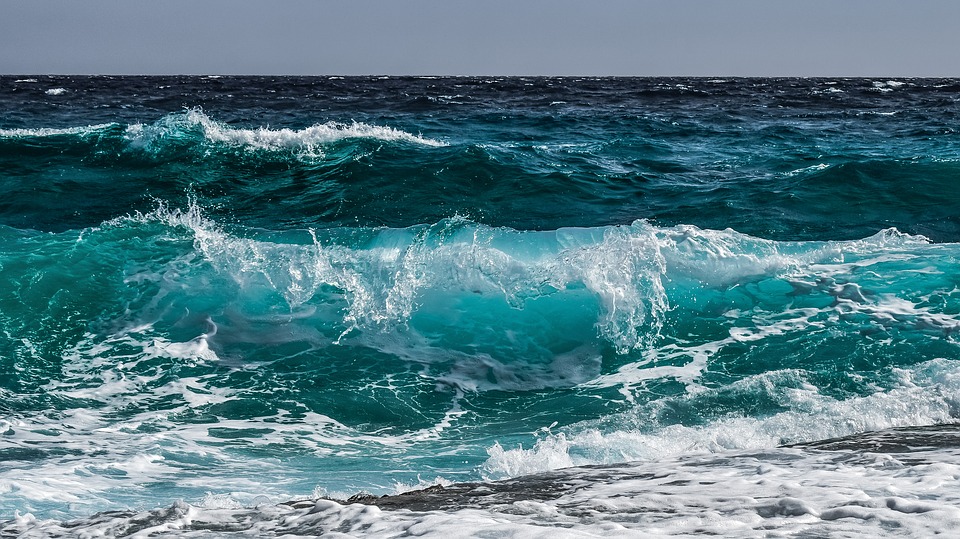Amazing Facts: 6 facts about extreme oceans
by Scott Dutfield · 30/07/2019

Counting down the deepest, deadliest and downright most hostile environments on Earth
Most shark-infested
When it comes to shark attacks, there are three species that sit firmly at the top of the food chain: the great white shark, the tiger shark and the bull shark. This is one gnarly trio of hungry fish, who are all keen predators with heightened senses. The most extreme place on Earth for shark attacks recently is New South Wales coast in Australia and over the last year the country has seen two fatalities, 29 attacks and 18 injuries. It’s thought that changing ocean currents are bringing the sharks’ prey closer to shore, luring in the ocean beasts alongside the fish. However, before you march out with your torch and pitchfork to chase the sharks from the bays, it’s worth bearing in mind that many more people are killed by the water that sharks swim in than by shark attacks themselves. Humans are naturally not a good diet choice for a shark – we are too bony with far too little blubber on us. Sharks need prey that is high in fat, such as seals. Very often a great white shark will bite a human as a curious nip to find out what they are, rather than in an attempt to feast on them. That said, when you’re swimming in an area with a known shark presence, the best advice is to get out of the water. Swim calmly and smoothly, as thrashing around will only draw the shark’s attention, and don’t ever wear jewellery or anything shiny that could make the shark think that you’re a tasty fish covered in scales. Where: New South Wales, Australia Oceans: Tasman Sea / South Pacific
Where: New South Wales, Australia Oceans: Tasman Sea / South Pacific
Tallest waves
It’s the stuff of every big-wave surfer’s dreams: the 30-metre wave. Praia do Norte near the coastal village of Nazaré in Portugal is at one of the most westerly points of Europe, and bears the brunt of the sweeping Atlantic swells. Europe’s largest underwater canyon, Nazaré Canyon, lies just offshore, which is a 200-kilometre long ravine that works to combine the energy from waves that have travelled across the Atlantic, currents from the canyon, gusting winds and local tidal forces into colossal waves.
Where: Nazaré, Portugal Ocean: Atlantic Ocean
Fastest growing
Plate tectonics can cause chaos through earthquakes, but they can also cause oceans to grow. The region offshore from Chile and Peru on the East Pacific Rise, where the Pacific plate is pulling away from the Nazca plate, is the site of the fastest seafloor spreading on Earth. This is where two plates pull away from each other, and magma bubbles up from the Earth’s core to fill the gap. In this region, up to 16 centimetres of new seafloor is produced per year.
Where: East Pacific Rise Ocean: Pacific Ocean
Deadliest
Beneath the Pacific Ocean lies a patchwork of molten terror known as the Ring Of Fire. Earth’s crust is made up of tectonic plates that fit together like a jigsaw, floating over a layer of molten rock. At boundary zones, plates rub against each other, push against one another or pull away from one another, each with differing consequences. In the Pacific Ring Of Fire, the landmasses that surround the ocean are at the boundaries of these plates. Home to 90 per cent of earthquakes, the Ring Of Fire is a hotbed of tectonic activity.
Where: South America, North America, across the Bering Strait, Japan and New Zealand Ocean: Pacific Ocean
Most extreme tides
At the head of the Bay of Fundy, at the right time of the month, the difference in high tide and low tide can be a huge 16 metres. When the tide is this high, the bay fills and empties 100 billion tons of seawater during each tidal cycle. The huge tide is a result of the bay’s shape and depth, as the water within the bay oscillates (like water sloshing from one end of a bathtub to another) in sync with tides from the Atlantic.
Where: Bay Of Fundy, Canada Ocean: Atlantic Ocean
Coldest
At the very bottom of the globe, surrounding frozen Antarctica, swirls the untameable Southern Ocean. It’s home to some of the fastest winds and tallest waves, and also boasts the largest ocean current (the Antarctic Circumpolar Current) that transports more water than all the world’s rivers combined. Temperatures can reach a bitterly cold -2 degrees Celsius, because the ocean’s salinity lowers its freezing point. Animals that live in the Southern Ocean also have to adapt to survive. Extra layers of blubber and super-insulating feathers are just a few adaptations, but one of the most extreme has to be that of the Antarctic icefish. This critter has evolved a type of ‘antifreeze’ protein to prevent ice crystals forming in its body when the temperature plummets.
Where: Surrounding Antarctica Ocean: Southern Ocean
This article was originally published in How It Works issue 81, written by Ella carter
For more science and technology articles, pick up the latest copy of How It Works from all good retailers or from our website now. If you have a tablet or smartphone, you can also download the digital version onto your iOS or Android device. To make sure you never miss an issue of How It Works magazine, subscribe today!





